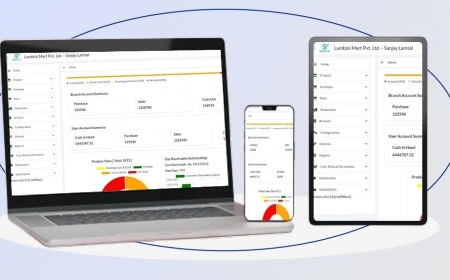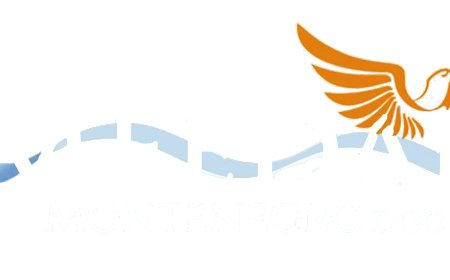The Rise of Remote-First Companies: Is Traditional Office Culture Dead in 2025?

In 2025, the business world looks very different from just a few years ago. One of the biggest changes is the rise of remote-first companiesbusinesses that primarily operate online, with employees working from home or from anywhere in the world.
As more companies adopt this model, its worth asking: is traditional office culture still relevant? This blog takes a realistic look at whats happening in the workplace, why remote-first is gaining ground, and whether office-based work will ever return to what it once was.
What Does Remote-First Really Mean?
The term "remote-first" refers to companies that structure their operations around remote work. Unlike hybrid modelswhere some people work in-office and others remotelyremote-first businesses design everything from team communication to performance evaluations with remote work in mind.
Key characteristics of remote-first companies:
-
Fully distributed teams: Employees are located in different cities or countries.
-
Digital collaboration tools: Tools like Slack, Zoom, Notion, and Trello are the backbone of daily operations.
-
Asynchronous work culture: Team members often work across different time zones, communicating and completing tasks without needing to be online at the same time.
-
Results-based evaluation: Performance is measured more by outcomes than by hours worked or office presence.
Remote-first companies aren't just a response to a crisis. Many are building long-term business models that rely on remote operations from the ground up.
Why Remote-First Is Gaining Momentum
There are several reasons why more companies are shifting toward remote-first structures in 2025. These reasons are rooted in cost savings, talent access, and changing employee expectations.
1. Cost Efficiency
Running a physical office is expensive. Companies must pay for rent, utilities, furniture, and maintenance. Remote-first businesses cut these costs significantly.
-
No rent or lease agreements: Companies can reinvest that money into growth, tools, or employee benefits.
-
Reduced overhead: Utility bills, office supplies, and travel costs are minimized.
-
Scalable teams: It's easier to scale teams without worrying about physical space.
This makes remote-first especially attractive to startups and mid-sized companies looking to remain lean.
2. Access to a Global Talent Pool
Remote work removes location barriers. Businesses can hire people from different cities, regions, or even countries.
-
Wider skill access: Companies are not limited to candidates who live nearby or are willing to relocate.
-
Time zone coverage: Some businesses benefit from teams working around the clock in different parts of the world.
-
More inclusive hiring: People with disabilities or caregiving responsibilities often prefer remote work environments.
This flexibility has led many businesses to rethink traditional hiring practices.
3. Employee Preference
Surveys in recent years have shown that many employees prefer remote work or at least want the option.
-
Better work-life balance: Commuting time is reduced, and people can schedule work around personal responsibilities.
-
Higher job satisfaction: Employees often report feeling more productive and focused in home environments.
-
Lower turnover: Companies that offer remote options often retain employees longer.
For some employees, being able to work remotely is as important as salary or job title.
Whats Happening to Traditional Office Culture?
The idea of office culture once included everything from team lunches and water cooler conversations to in-person meetings and performance reviews. In 2025, many of these elements are being rethought or replaced.
1. Hybrid Offices and Downsizing
Some companies have not gone fully remote, but many are reducing their office footprint.
-
Shared workspaces: Businesses are using coworking spaces or shared office hubs instead of maintaining large corporate offices.
-
Flexible schedules: Employees come into the office only for specific events, team meetings, or collaboration sessions.
-
Satellite offices: In place of one central office, companies set up smaller locations in key regions.
Traditional office spaces are still in use, but theyre no longer the default setting for daily work.
2. New Approaches to Team Building
Remote-first companies have to be intentional about building connections among employees.
-
Virtual meetups: Team-building activities like online games, discussions, or coffee chats help recreate some aspects of in-office culture.
-
Annual retreats: Some businesses organize in-person gatherings once or twice a year to strengthen relationships.
-
Shared digital spaces: Platforms like Slack have become places where employees casually interact, much like office hallways.
While different from office culture, remote-first workplaces are finding new ways to build team identity and trust.
Challenges That Still Exist in Remote-First Models
Despite its growth, remote work is not without challenges. Businesses still need to deal with communication issues, time zone differences, and the risk of burnout.
1. Communication and Misalignment
When people arent in the same room, misunderstandings can happen more easily.
-
Delayed responses: Time differences can slow decision-making or make collaboration harder.
-
Over-reliance on text: Not everyone communicates well in writing, leading to gaps in understanding.
-
Fewer spontaneous conversations: Its harder to brainstorm or problem-solve informally.
To address this, remote-first companies need strong communication protocols and regular check-ins.
2. Managing Productivity
Remote work removes the visual cues of traditional offices. Managers cant see whos at their desk or staying late.
-
Over-monitoring: Some companies respond by using tracking software, which can damage trust.
-
Under-communication: Without updates, leaders may assume work isnt getting done, even when it is.
-
Burnout: Remote workers sometimes feel pressure to be always on, leading to fatigue and reduced performance.
Clear expectations, focus on results, and scheduled time off can help maintain healthy productivity levels.
3. Isolation and Mental Health
Not everyone enjoys working alone. For some people, the office provided a social outlet and daily routine.
-
Lack of connection: Remote workers may feel disconnected from colleagues and the companys mission.
-
Fewer networking opportunities: Junior employees especially may miss out on mentorship or career development moments.
-
Work-life blur: Without a clear boundary between home and work, stress can build up.
Companies need to be proactive about employee well-being and offer tools for mental health and community building.
What the Future Might Look Like
The rise of remote-first businesses doesnt mean offices will disappear entirely. Instead, it suggests a new balance is emergingone thats more flexible, digital, and employee-centered.
Heres what we might expect in the coming years:
-
Offices as collaboration hubs: Rather than being a daily requirement, the office becomes a place for focused collaboration.
-
Standardization of remote tools: Digital platforms will continue improving to support seamless remote work.
-
Policy and legal shifts: Labor laws, tax codes, and HR policies will evolve to support international and remote teams.
-
Industry variation: While tech and digital services are well-suited to remote work, industries like manufacturing, healthcare, or retail will still rely on physical presence.
In the same way you might search for a smoke vape store Whether you're a business owner, manager, or employee, understanding this change is essential to staying relevant and productive in the evolving work landscape.
or the best vape shops online and find flexible shopping options, workplaces are shifting to meet people where they arevirtually.
Final Thoughts
The shift to remote-first models is real and growing. In 2025, many businesses now see it not just as an option, but as a core part of how they operate. Traditional office culture isnt exactly deadbut its being reshaped. The key question is no longer Should we go remote? but rather How can we make remote work sustainable, inclusive, and effective for the long term?
Related Information - How the Global Economy is Shaping Everyday Consumer Choices in 2025





































